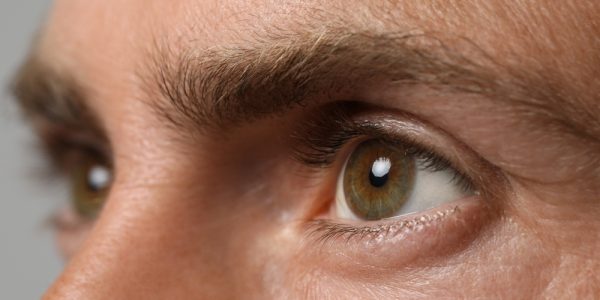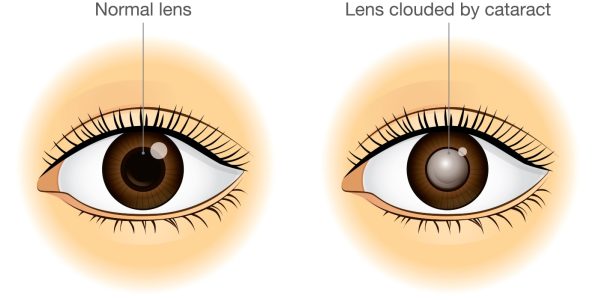According to the National Eye Institute, about half of Americans have a cataract or have had a cataract by the age of 75. Since cataracts are so common in older adults, Bay Area laser eye surgeon Mark Mandel, MD,

thought it would be helpful to blog about some of the telltale warning signs.
Clouded or Blurry Vision
Cataracts affect the eye’s lens, which is the part of the eye responsible for focusing. The lens is made up of mostly water and proteins arranged in a way that allows light to pass through the lens. But with age, the lens’ proteins can start to clump together, resulting in areas of cloudiness. This prevents light from passing through the lens normally and instead causes cloudy or blurry vision.
Cataracts develop gradually; in the early stages of a cataract, the clouding may only affect a small area of the lens and you may not notice any cloudiness or blurriness. As cataracts progress, the visual distortion becomes more prominent. Many people say that having cataracts is like constantly looking through a cloudy or streaky window.
Glare
Another telltale sign of cataracts is glare, which can occur in bright and low lighting conditions. You may notice that light from the sun or a lamp seems glaring or too bright. Or at night, oncoming headlights may cause more glare than normal. Sometimes this glare can cause pain or sensitivity. You may also notice halos around lights, particularly at night. You should be very careful when driving at night and not drive if your vision is compromised.
Double Vision
Cataracts may cause you to see two images of an object where there should only be one (i.e., double vision). This may happen in one or both eyes, but it is more likely to affect one eye.
Dim or Faded Colors
A common symptom of cataracts is the fading or yellowing of colors. The protein clumps can turn yellow or brown and cause all light entering your eye to take on a yellowish tint. Colors may look less vibrant than they once did, and you might have trouble differentiating between colors.
Frequent Changes in Eyeglass Prescription
Lastly, if you find yourself frequently needing to change your eyeglass prescription, you could have cataracts. Simply replacing your old reading glasses with a stronger pair will not solve the problem.
If you are experiencing any of these telltale signs of cataracts, you should book a vision screening with your eye doctor to determine the cause. If you are diagnosed with cataracts, Dr. Mandel can explain your treatment options. Please call 510-866-3937 or email Optima Eye for more information.


